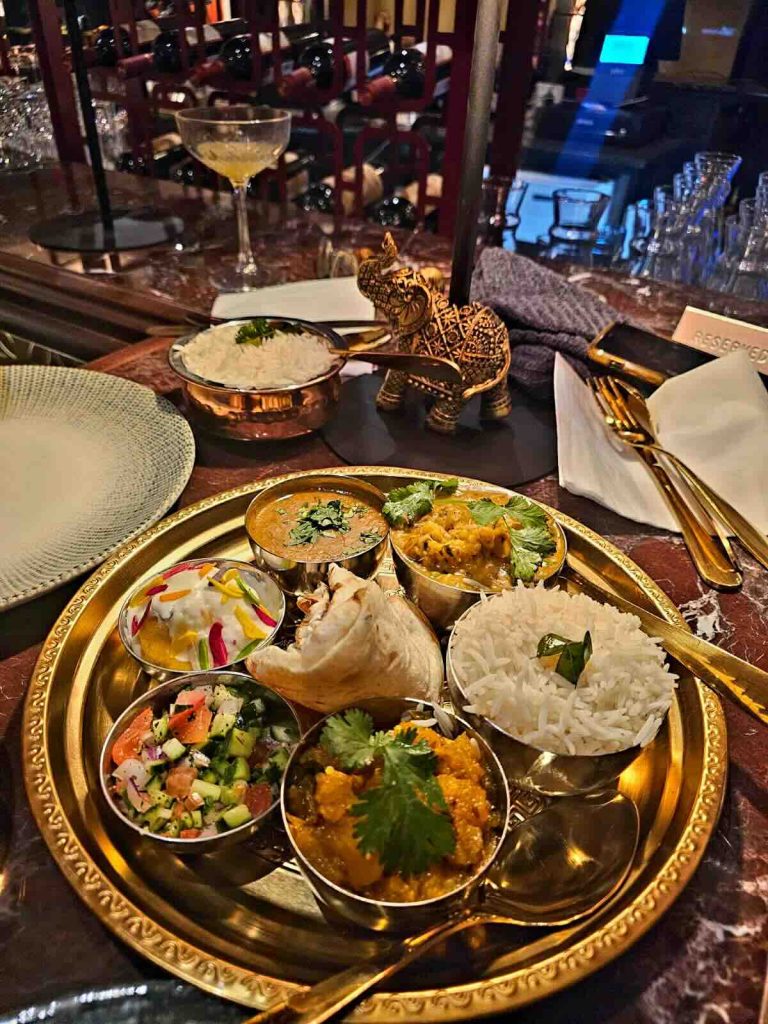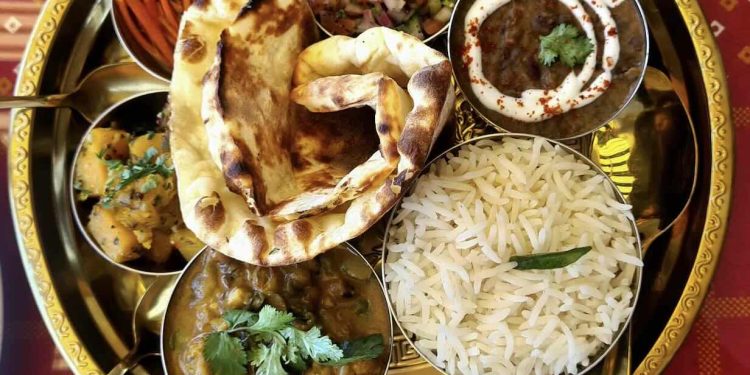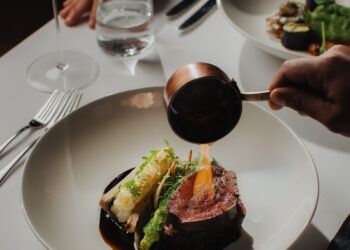South Africans love curry – it’s a tasty staple in our cuisine and loved by people of all ages. Curry is also a profound expression of SA’s culture, our many versions of it painting a cultural culinary canvas.
With National Curry Week observed this week, it’s fitting to celebrate the fact that curry culture is experiencing a surge in popularity globally. A Hospitality World report shows the number of Indian restaurants has grown by 25 percent in the last five years, outpacing the overall restaurant industry’s growth.
One of the reasons for curry’s widespread adoption is its versatility and adaptability, says Executive Chef Jessica Munisamy, who oversees the popular restaurants Modern Tailors, a brand that is redefining immersive Indian dining.
The notion of curry was first introduced to South Africa by slaves from Ceylon, Indonesia, Batavia, Java and Madagascar who’d been brought in to serve the Dutch. Their blend of spices like turmeric, cinnamon, cumin, coriander, and chilli was the foundation of the flavourful Cape Malay curries we know today. Years later, the arrival in Durban of indentured labourers from the south of India inspired the fiery hot Durban curries we know today, with Indian Gujerat merchants bringing with them the more restrained, yet no less flavourful, vegetarian dishes like potato and pea curry and lentil dhal.
These diverse flavours inspired the wide array of curry dishes that now exist within our cultural landscape.
“Curry has a deep-rooted and cultural significance to many South Africans who associate it with positive memories and experiences, such as family gatherings or cultural celebrations. Your favourite curry might be an iconic dish like chicken tikka, lamb rogan josh, a creamy korma, or butter chicken, or perhaps it’s a bunny chow, curried fish, mince cooked in a sweet and spicy curry sauce, or samp curry,” says Chef Jessica.
”For me, Indian food is all about nostalgia, memories, family, and the love that goes into making a curry dish. The lamb curry at Modern Tailors, for instance, is my mom’s recipe passed down to me. Growing up in Durban, I remember how I’d spend Sunday mornings cooking with my mom in the kitchen and she’d teach me to select and blend and grind the spices for the food she was making.”
Bold flavours
It doesn’t hurt curry’s popularity that the accompanying sides to an Indian meal are delicious, too: buttery naan, fragrant rice and masala potatoes are the perfect foil to the bold flavours that Indian cooking brings to the table And, then of course, there are samoosas. Second only to curry in the list of famed Indian foods, samoosas are universally adored by all.
”It never ceases to amaze me just how many samoosas we churn out of our two kitchens at Modern Tailors Rosebank and the newly opened Modern Tailors: Ambassador in Groenkloof, Pretoria. Every month we hand-fill and fry over 6 000 samoosas. That flaky, crunchy bite of a freshly made samoosa is irresistible – it appeals to anyone, young and old,” she says.
Fusion cuisine
The burgeoning popularity of Indian restaurants is no doubt due to people becoming more adventurous about different cultures, and chefs who are pushing the boundaries of curry’s versatility across the foodie board – from curry-inspired burgers and tacos to curry-infused ice cream.
“I love combining curry flavors with unexpected ingredients to create exciting dishes, and I always advise people to try something outside of their usual curry repertoire. Favourites like chicken korma and butter chicken are delicious, but why not try a Chettinad Seafood pot, which has prawns, calamari, mussels and fish simmered in a spicy coconut, lemongrass and ginger sauce, or our halloumi coated in a masala and fried, with a garlic tamarind drizzle and chilli and honey dipping sauce,” says chef Jessica.
“Even in Pretoria, which is known for its red meat lovers, people are relishing our take on steak at our Groenkloof restaurant – a pan-fried Black Angus sirloin with spiced ghee, garlic cloves, and curry leaves, served with a spicy chimichurri, as well as a tasty, but fiery, beef short rib marinated in ginger, garlic, and chilli, then slow cooked to tender perfection.”
Health benefits
With its varied spices and ingredients, curries have health benefits, too. Turmeric, a key ingredient in many curries, has been studied for its anti-inflammatory properties, and cumin and coriander are known for their digestive benefits. Research has also shown that curry powder may boost blood flow and improve blood vessel function, which in turn may decrease heart disease risk.
The complex flavours and aromas also encourage mindful eating. “Eating a curry should not be a rushed affair – each bite should be savoured to appreciate the artful combination of ingredients,” states Chef Jessica. “Even fiery curries aren’t just about the chilli. The biryani I make, for example, has 23 different spices in it!”
If you’re cooking curry at home, Chef Jessica advises the following to add flavour and depth: “Avoid ready-made sauces and musty bottles of spice from your pantry! Always use fresh ingredients and if you’re grinding up whole spices for a recipe, lightly toast them in a dry pan first to release their fragrance. And fry your spices as you add them – it will enhance their flavour and make them taste bolder.
 Last, she says, don’t forget to add toppings. “Choose interesting toppings that contrast well with the rich spiciness of your curry – fresh pomegranate, toasted coconut flakes, and plain yoghurt.”
Last, she says, don’t forget to add toppings. “Choose interesting toppings that contrast well with the rich spiciness of your curry – fresh pomegranate, toasted coconut flakes, and plain yoghurt.”
Curry’s ability to cater to diverse tastes and preferences has made it a beloved and enduring culinary phenomenon, and there’s a good reason for that – anything that’s been around for hundreds of years can’t be doing much wrong.



































